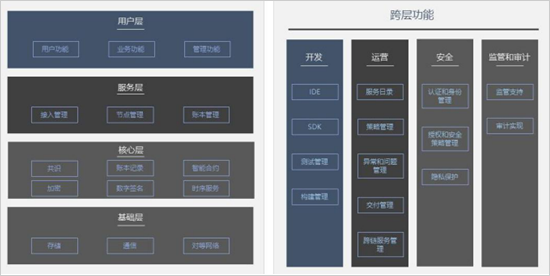From the perspective of the Internet of Things architecture, the three levels of blockchain and Internet of Things are combined.
The "coin circle" of the blockchain has been arguing over the "Li Xiaolai recording outflow" incident, revealing how the richest bitcoin cuts the leek, and the consensus of the blockchain collapses. The "coin circle" is really hard to read. This is a technology that everyone can see and destroy the blockchain. However, it is impossible to overthrow a boatman. After all, there are still some "chains" in the blockchain, and think about how to make the blockchain empower the Internet of Things.
We also learned about several companies, like the six-domain chain, who have been studying the IoT architecture standards based on the “six-domain model†(ISO/IEC 30141DIS, GB/T 33474-2016), hoping to effectively guide and establish the Internet of Things. Operate the service system to ensure the actual and effective operation, sustainability and business closure of the system. Focusing on the application needs of specific industries, based on the IoT six-domain model reference architecture, promote the establishment of sub-industry DApps, such as agricultural Internet of Things, industrial Internet of Things, energy and Internet of Things, etc., to provide digital asset distribution for each DApp, and for the Internet of Things six Various user entities in the domain provide digital credit identity registration, management, data uplink, data validation, data query, smart contract setting, smart contract triggering, automatic accounting, etc. on the six domain chain to ensure data The consistency, authenticity and irreparable modification, the establishment of an asymmetric credit mechanism between people and objects - ACM, to ensure the security and efficiency of data assets and value interconnection.

Wanlink is mainly used as an interactive standard and basic application platform for the IoT blockchain. Driven by the universal incentive mechanism and adopting the decentralized design scheme to become the TCP/IP infrastructure in the Internet of Things field, it aims to solve the problem of limited size caused by fragmentation and poor compatibility between IoT applications. Improve the current situation of the lack of standardization and over-centeredness in the popularity and application of the Internet of Things.
In addition, we also learned about a blockchain company called "core chain" HPB, mainly as a public chain, they are positioned as an easy-to-use high-performance blockchain platform, designed to achieve the performance expansion of distributed applications to meet the reality. The real business needs of the world. This is done by creating an architecture that can build an application-like operating system. The architecture provides account, identity and authorization management, policy management, database, asynchronous communication, and program scheduling on thousands of CPUs, FPGAs, or clusters. Not long ago, they also released the IoT blockchain chip, which is mainly for the IoT application, specifically what kind of logic ideas, we will further understand later.
Today, our main thinking is how the blockchain is integrated with the Internet of Things. However, the development of the Internet of Things has not yet entered the market. The development of the Internet of Things is still the same, and the blockchain is optional. It is really a block. Is the chain wishful thinking? I still analyze it from three levels of integration with the Internet of Things:
Chip layer
Let's take an air detector as an example. If it wants to monitor carbon dioxide, formaldehyde, PM2.5, temperature and humidity in the air, it must be equipped with corresponding sensor chips. The data collected by these sensors will pass. Bluetooth, WiFi or NB-IoT is transmitted to the public network. In fact, he only needs one kind of transmission communication method. Therefore, the communication chip included in the general situation is relatively simple. It is only necessary to make a small blockchain. The development package is embedded in someone else's chip. This is the first level of the blockchain and the Internet of Things, the chip layer.
Platform layer
The platform layer is actually similar. The blockchain is also a small development package placed on the platform. Because the platform has many modules, the platform is to build applications, then in each small microservice build, the blockchain will be When the development kit is put in, it can be tracked. The blockchain mainly solves the problem of identification and tracking. Taking the refrigerator as an example, we know what you have done with the refrigerator and what you bought.
Application layer
The combination of application layers may be relatively complicated. For example, if a company is doing data-based applications, it also needs to develop a program embedded in it. This is very difficult for blockchain technology companies. A very multi-application company cooperates, so it is easier to find a chip maker relatively, as long as people are willing to let you inlay it. In addition, there are not many companies that do development platforms at home and abroad, and it is easy to do, but it is difficult to apply at the application level, and there are many enterprises that are doing application and fragmentation. However, in theory, these three levels are feasible.
Finally, we return to the original question, what is the task of embedding blockchain technology here? For the Internet of Things, it has developed for so many years, and no blockchain has developed as usual.
Manipulator Laser Welding Machine
Manipulator laser welding machine
Shenzhen You Kong Laser Technology Co., Ltd , http://www.youkonglaser.com